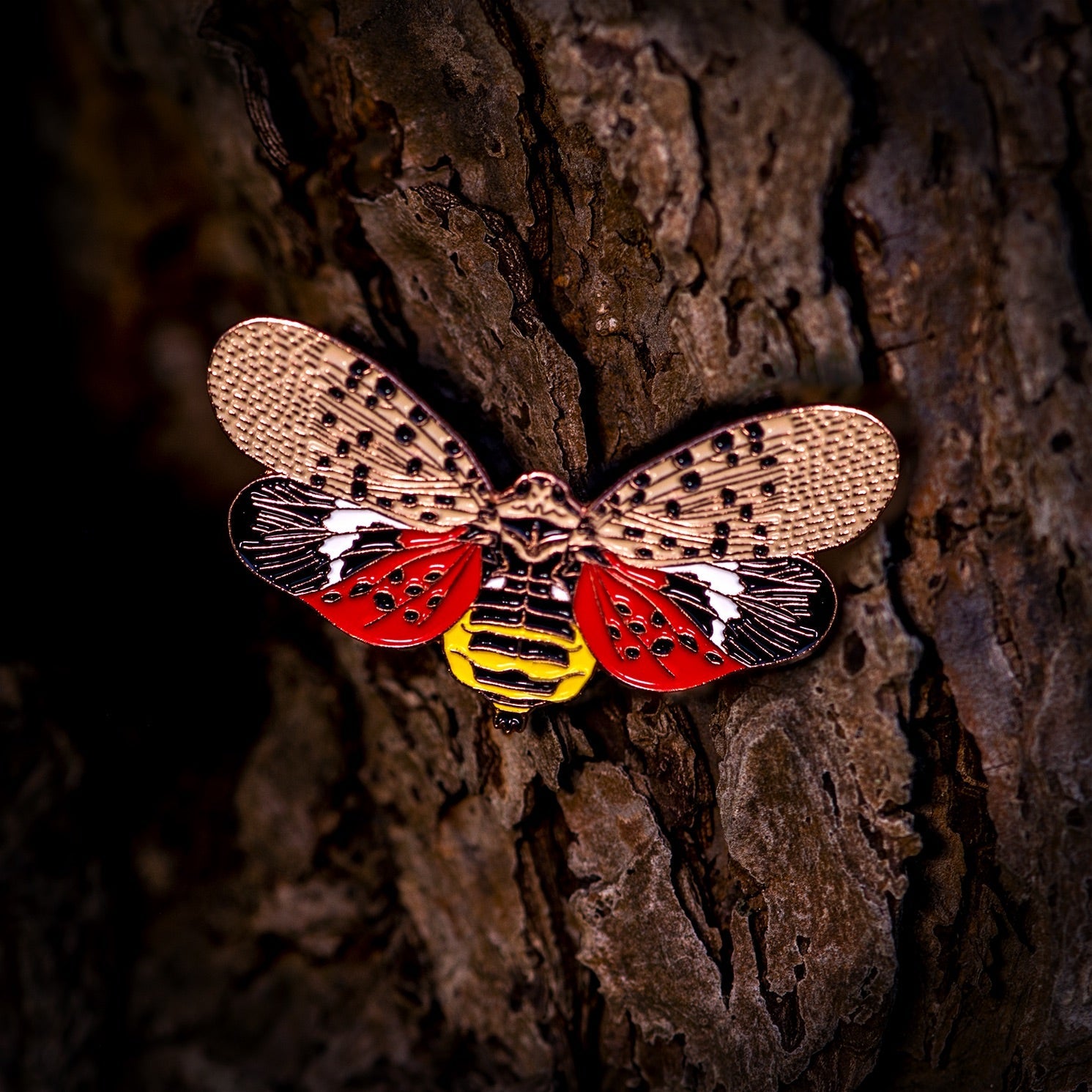
February's Bug Box: the Spotted Lanternfly
Our newest box is a departure from the usual form for us. Far from being a beloved childhood favorite or an exotic marvel on a bucket list, the Spotted Lanternfly (Lycorma delicatula) is an invasive insect spreading alarmingly across eastern North America. But despite the warnings posted across the mid-Atlantic and northeastern United States to watch out, report, and eliminate the lanternfly, these unusual beauties seem to fascinate bug fans, making this the most-requested insect for The Bug Box over the past year.
Fortunately, we can spread the lanternfly as much as we like in the form of harmless pins, patches, and stickers, so we got to work on the perfect box for our imperfect world. It's truly a delightful-looking insect, with a metamorphosis as striking as a butterfly's. In fact, the adults are often mistaken for butterflies or moths due to their wing size and colors.
First, a little lesson in case you're out of the lanternfly loop. This unique-looking planthopper has been accidentally introduced to the United States, Japan, and South Korea from China. In its native range, the spotted lanternfly is just like any other piece of the food web puzzle, feeding on a variety of flora and being fed upon, in turn, by a handful of parasitic wasps. But with no natural predators in its new territories, it has spread rapidly in just a few years and caused extensive damage to food crops and gardens.
Its expansion has been helped by pre-existing introduced populations of its preferred host plant, the much-maligned and ironically-named Tree of Heaven (Ailanthus altissima). While the lanternfly can feed upon a huge variety of plants, it seems to need the Tree of Heaven to create new generations that thrive. And while the Tree of Heaven is also native to China, it has also been an invasive pest in other parts of the world for decades. Though notoriously difficult to eradicate (it can grow back from the roots), trees are ultimately easier to spot and slower to spread than insects. Fighting back against Tree of Heaven could severely hamper the lanternfly's spread.
The fight against the lanternfly in the United States has a many-pronged approach. Tracking the spread relies largely upon citizen scientists reporting lanternfly sightings - so for February's box, we decided on a woven "Lanternfly Spotter Scarf" to keep us cozy on winter walks, when egg masses are most easily seen.
Invasive insects can be next-to-impossible to completely eradicate - sometimes the best we can hope for is 'naturalization', when nature finds balance again and the invasive species is kept in check by existing or introduced diseases or predators.
Scientists are currently studying whether the Spotted Lanternfly's natural parasites can be introduced without harming native insects. Since parasitic wasps are often extreme specialists targeting a narrow range of species (or even just a single species!), this approach could ultimately prove the most effective.
With global trade increasing everywhere at a dizzying pace, invasive species are a reality of our world. How they shape our future ecosystems and food resources is up to us - to an extent. The lanternfly is a reminder that some mistakes can't be undone and some things are beyond our complete control. It's up to us to find the way forward and protect biodiversity as much as we can.
One of the best parts about creating The Bug Box is that each month is a different adventure through the life history of these extraordinary creates. Their lives are as dramatic as those of large, charismatic animals we see in nature documentaries. But because their scale is so much smaller, we often know less about the insects in our own backyards than we do about the lions in the Serengeti.
Each box is a chance for us to share some of this wonder, because it is worth sharing these remarkable "little things that run the world". So let's get out there, wrap yourself in a scarf, put your pin on your jacket - and spread awareness (but not real lanternflies).
Have you seen the Spotted Lanternfly in your area? Are you a citizen scientist keeping an eye out? Let us know, we'd love to hear your story.




Leave a comment
This site is protected by hCaptcha and the hCaptcha Privacy Policy and Terms of Service apply.